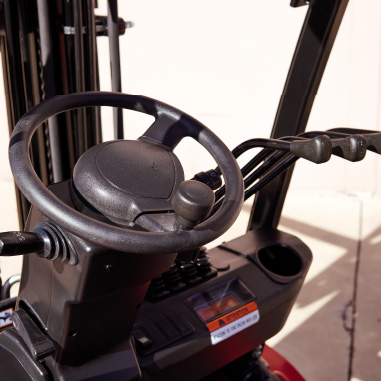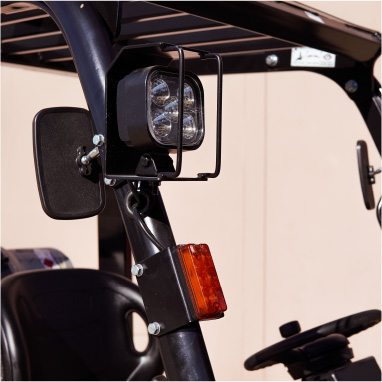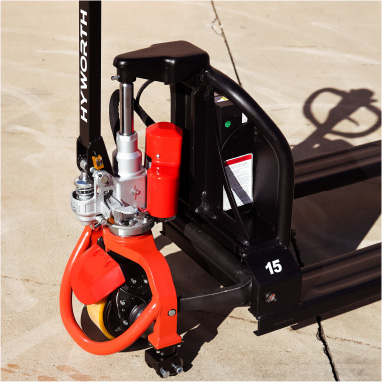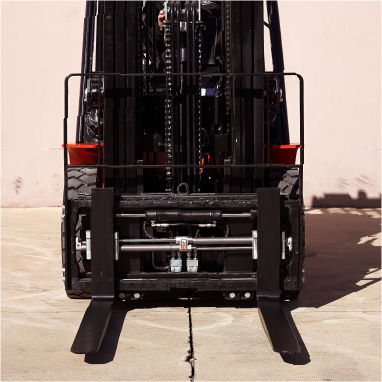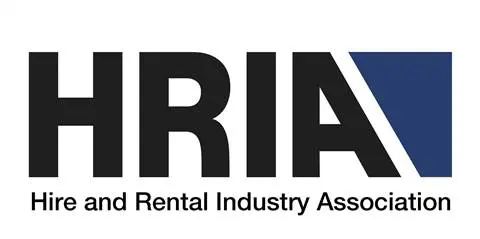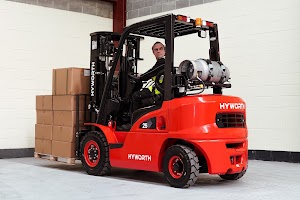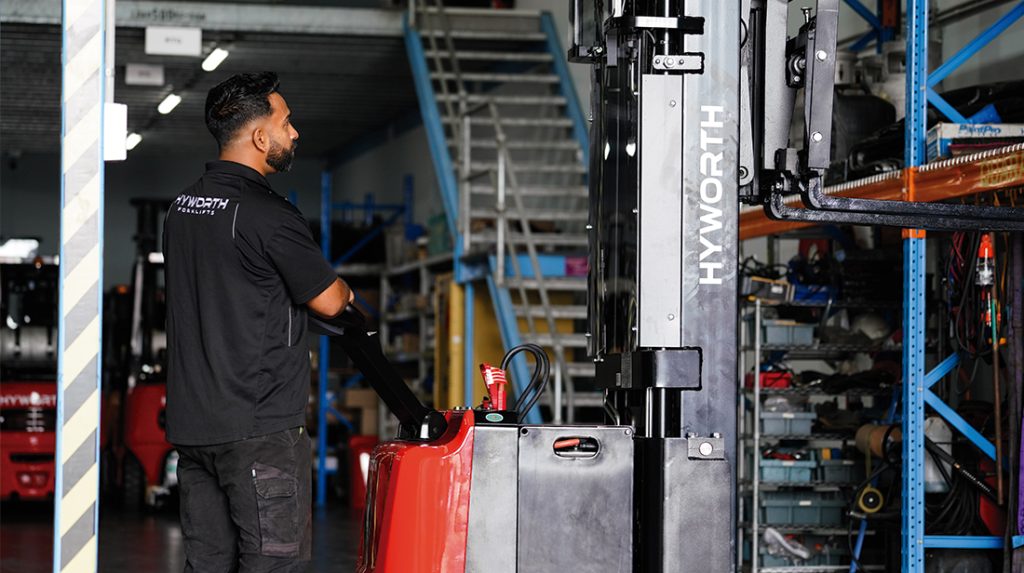
Obtaining a forklift licence is more than just meeting regulatory requirements, it’s a crucial step in ensuring safety and expanding your career prospects in the warehousing and logistics industries. In Australia, there are two main types of forklift licences—LF and LO—each with its own set of guidelines and opportunities. While both are equally important, their unique characteristics make them suitable for different roles and types of machinery.
This initial look into forklift licences will shed light on their essential role in promoting the safe and legal use of forklifts. It will also outline the various career opportunities they can open up. As we delve deeper into the specifics of LF and LO licences, our goal is to help future operators make informed choices, enhancing their confidence with practical training and skill in managing these powerful machines.
Why do you need a forklift licence in Australia?
Obtaining a forklift licence in Australia goes beyond merely fulfilling a legal obligation. It has significant implications, greatly impacting safety protocols, compliance, and professional reputation.
Safety is the top priority when it comes to operating heavy machinery like forklifts. The training involved in the licensing process teaches operators the best practices and safety measures, significantly lowering the risk of accidents. According to Safework NSW, in 2022 they accepted 142 claims where the cause of injury was a forklift incident, with the transport, postal, and warehousing industry accounting for the most claims with 45 incidents, followed by manufacturing and wholesale trade, with 35 and 32 respectively. Hence, adequate training represented by a forklift licence is a critical factor in mitigating such risks.
Secondly, obtaining a forklift licence is a legal obligation under Australian law. The Work Health and Safety Regulation 2011 requires operators to hold a High-Risk Work permit, which includes LF and LO forklift licences. Non-compliance can result in hefty penalties and legal repercussions.
Lastly, a forklift licence enhances your professional credibility. It’s a testament to your commitment to safety, compliance, and continuous learning. Employers highly value such dedication, potentially opening doors to greater career opportunities. A forklift license is crucial, ensuring workplace safety and promoting professional development, not just a mere certificate.
Forklift hazards: The risks of unlicenced operation
Forklifts are essential in many industrial settings, but using them without the right training or a licence can be extremely dangerous. Mishandling these machines can have serious consequences for both the operator and those nearby.
One major risk comes from improper load management. If pallets are not secured correctly or are overloaded, they can fall, potentially causing serious injury or even death. Another common danger is the forklift tipping over, which is a frequent and hazardous incident.
Accidents involving pedestrians are also a significant concern in busy warehouses. Untrained operators might not notice people in their path, leading to collisions. Additionally, driving recklessly or speeding in confined spaces often results in severe injuries.
These dangers show why proper forklift operation is crucial. Undergoing comprehensive training and obtaining a forklift licence gives operators the skills needed to handle these risks, creating a safer workplace for everyone.
Types of forklift licences in Australia: LF and LO
In Australia, two types of forklift licences dominate the industry landscape: LF and LO. Each licence category carries its own set of permissions and is tailored to different kinds of forklift operations.
The LF licence, or “Licence to Perform High-Risk Work – Forklift Truck,” permits operators to handle forklift trucks equipped with a mast and an elevating load carriage, complete with attached forks. This license covers standard forklift models like counterbalance forklifts, widely used in warehouses for lifting and moving heavy loads.
The LO licence, or “Licence to Perform High-Risk Work – Order-Picking Forklift Truck,” is geared towards the operation of order-picking forklifts, or ‘stock pickers.’ These specialised machines allow the operator’s compartment and controls to elevate along with the load, enabling accurate handling and placement of goods at higher levels within the warehouse.
While both licences cater to distinct forklift categories, they share stringent regulatory standards. To obtain either licence, operators must undertake a comprehensive training course provided by a Registered Training Organisation (RTO), successfully pass a theoretical and practical assessment, and be at least 18 years old.
Regulations also stipulate that both LF and LO licences must be renewed every five years. During this period, operators are required to demonstrate ongoing competency in forklift operation and adherence to the evolving safety standards of the industry.
In sum, the LF and LO licences serve different functions within the realm of forklift operation. Your choice between them will depend on the specific needs of your role, whether that involves the general lifting and transporting of goods (LF) or the precise picking of stock from high warehouse racks (LO). Understanding license scopes and regulations ensures informed decisions, enhancing professional skills and contributing to workplace safety.
What is an LF licence: What you need to know
Getting an LF (Licence to Perform High-Risk Work – Forklift Truck) licence in Australia is an important step in establishing your career in the warehouse and logistics sector. Recognised for its versatility and wide range of uses, the LF licence is a standard requirement for most forklift operators. But what does an LF licence actually cover, and what does it mean for your job in practical terms? Let’s explore the details of the LF licence, including its regulations and how it applies in real-world scenarios.
What forklift can you drive with an LF licence?
The LF licence permits you to operate a majority of conventional forklift trucks. These machines typically have a mast and an elevating load carriage with attached forks that can lift and transport hefty loads over short distances. It primarily covers counterbalance forklifts, which are widely used across numerous warehouse and industrial settings for their ease of operation and ability to handle a variety of materials.
For example, in a busy warehouse environment, an LF-licenced operator could use a counterbalance forklift to unload a delivery truck, transport pallets to their assigned storage locations, and load outbound vehicles with efficiency and precision. This versatility is one of the primary reasons why the LF licence is so popular among forklift operators and employers.
LF licence holders can also operate reach trucks, another common warehouse staple. Reach trucks, designed for narrow aisles, have a unique design allowing forks to ‘reach’ into racks to manage loads.
Moreover, the LF licence covers other machines such as three-wheeled forklifts, which are ideal for maneuvering within confined spaces due to their compact build, and high-lift straddle trucks which are perfect for vertical stacking in high-rise storage systems.
However, it’s crucial to understand that while an LF licence covers a wide range of machinery, it does not include the operation of order-picking forklifts, where the operator’s compartment moves up and down with the load. Operating these machines requires an LO (Licence to Perform High-Risk Work – Order Picking Forklift Truck) licence.
Regarding regulations, obtaining an LF licence requires the operator to be at least 18 years old. They must complete a comprehensive training course provided by a Registered Training Organisation (RTO) and pass both a theoretical and practical assessment. Additionally, the LF licence needs to be renewed every five years, with the operator showing continued competency.
What is a LO licence: The essentials
The Licence to Perform High-Risk Work – Order Picking Forklift Truck (LO) is a specialised certification in the Australian logistics and warehouse sector. An LO licence demonstrates the operator’s expertise in using order-picking forklifts, or ‘Order Pickers,’ which are designed for precise, high-rise material retrieval. This licence complements the LF licence by focusing on a different set of forklifts and tasks. Let’s take a closer look at the LO licence, the machinery it covers, the regulations involved, and how it applies within the industry.
What forklift can you drive with an LO licence?
An LO licence is specifically aimed at authorising the operation of order-picking forklifts. These are not your typical forklifts but are advanced machines designed to facilitate efficient order picking in warehouses with high-rise storage systems. These machines are unique in their operation, allowing the operator’s compartment to raise and lower with the load to optimise order picking at various heights.
A practical scenario would be in a large-scale distribution centre where a variety of products are stored in high-shelving units. A LO-licenced operator could manoeuvre an order-picking forklift through narrow aisles, ascend to the appropriate level, pick the required items, and then transport them to the dispatch area. This specificity makes the LO licence indispensable in industries where the retrieval of individual items at varying heights is a daily task.
An LO license covers stock pickers and turret trucks, featuring high reach and pivoting forks for deeper racking storage. These machines are commonly used in very narrow aisle warehouses where maximising storage space is a priority.
Just like the LF licence, acquiring an LO licence comes with its regulations. It requires applicants to be at least 18 years old, undergo rigorous training from a Registered Training Organisation (RTO), and pass both theoretical and practical assessments. LO licence holders are also obligated to renew their licences every five years, ensuring they remain competent and up-to-date with current safety practices.
LF vs LO: Which forklift licence is right for you?
Choosing between the LF and LO forklift licences depends on your career goals, job needs, and the opportunities you want to pursue in the warehousing and logistics industry. Each licence offers unique benefits, and understanding these differences will help guide your decision.
The LF licence covers a wide range of standard forklifts, making it a versatile option for many industry roles. From warehouse operations to retail logistics, having an LF licence equips you with the essential skills to operate counterbalance forklifts. This broadens your career prospects, as LF-licensed operators play a key role in various sectors where material handling and lifting are essential.
In contrast, the LO licence focuses on order-picking forklifts. This licence is ideal for positions in high-volume warehouses or distribution centres that rely on efficient order picking from high storage systems. An LO licence showcases your ability to handle high-reach machinery, opening up specialised roles that require a detailed understanding of order-picking processes.
Ultimately, the best licence for you depends on your career path and job requirements. Both LF and LO licences have distinct advantages, so consider your individual goals and the opportunities you aim to pursue when selecting your forklift licence.
Eligibility and procedure to obtain your forklift licence
To obtain a forklift licence in Australia, you must meet certain eligibility criteria and follow a structured process. Applicants need to be at least 18 years old and have a basic understanding of English, as the training and assessment are conducted in this language.
The process starts with enrolling in a recognised training course that meets the Australian Qualifications Framework standards. This course provides you with the necessary knowledge and skills to operate a forklift safely and efficiently. After completing the course, you’ll need to pass both a theoretical and practical assessment.
Next, you’ll need to apply for the licence through SafeWork, the regulatory authority. This involves completing a Notice of Satisfactory Assessment (NSA) and submitting required documents, including identification proof and passport-sized photos. Once your application is successfully submitted and passes the necessary checks, your licence will be granted. It’s important to stay informed about the specific requirements in your state, as regulations can vary.
Maximising employment opportunities: The advantage of both LF and LO licences
Holding both LF and LO forklift licences undoubtedly broadens your career prospects. With these dual licences, you’re equipped to operate a wider range of forklifts, thus increasing your employability in a variety of sectors.
Warehousing, manufacturing, and logistics are industries that particularly appreciate dual-licence holders. LF licences are essential for handling larger and heavier loads in expansive warehouses, while LO licences are perfect for manoeuvring in tight spaces or high racking, commonly found in vertical storage facilities.
As businesses continue to evolve and diversify, the need for versatile employees grows. Holding LF and LO licences showcases a wide skill set and adaptability, enhancing your value to employers. Enhancing your forklift operating skill set through dual licensing is a practical step towards maximising your employment opportunities.
In conclusion
Securing a forklift licence in Australia is more than just a legal requirement; it’s crucial for promoting workplace safety and boosting your professional credibility. Proper licensing ensures competent and safe operation, reducing hazards and creating a safer work environment beyond simply meeting compliance standards.
In Australia, forklift licences are divided into two main categories: LF and LO licences. An LF licence allows you to operate any forklift except for order-picking forklifts, which require an LO licence. Each licence comes with its own set of regulations and covers different types of machinery, catering to various industry needs.
To obtain these licences, you must meet certain eligibility criteria, complete approved training courses, and pass the necessary examinations. Understanding this process helps prospective operators navigate the path to licensure more smoothly.
If you already have your licence and need assistance purchasing or hiring a forklift, our team is here to help. Get in touch with us today for expert advice and tailored solutions to meet your forklift needs. By acquiring the right equipment, you can ensure greater efficiency and productivity in your operations.
